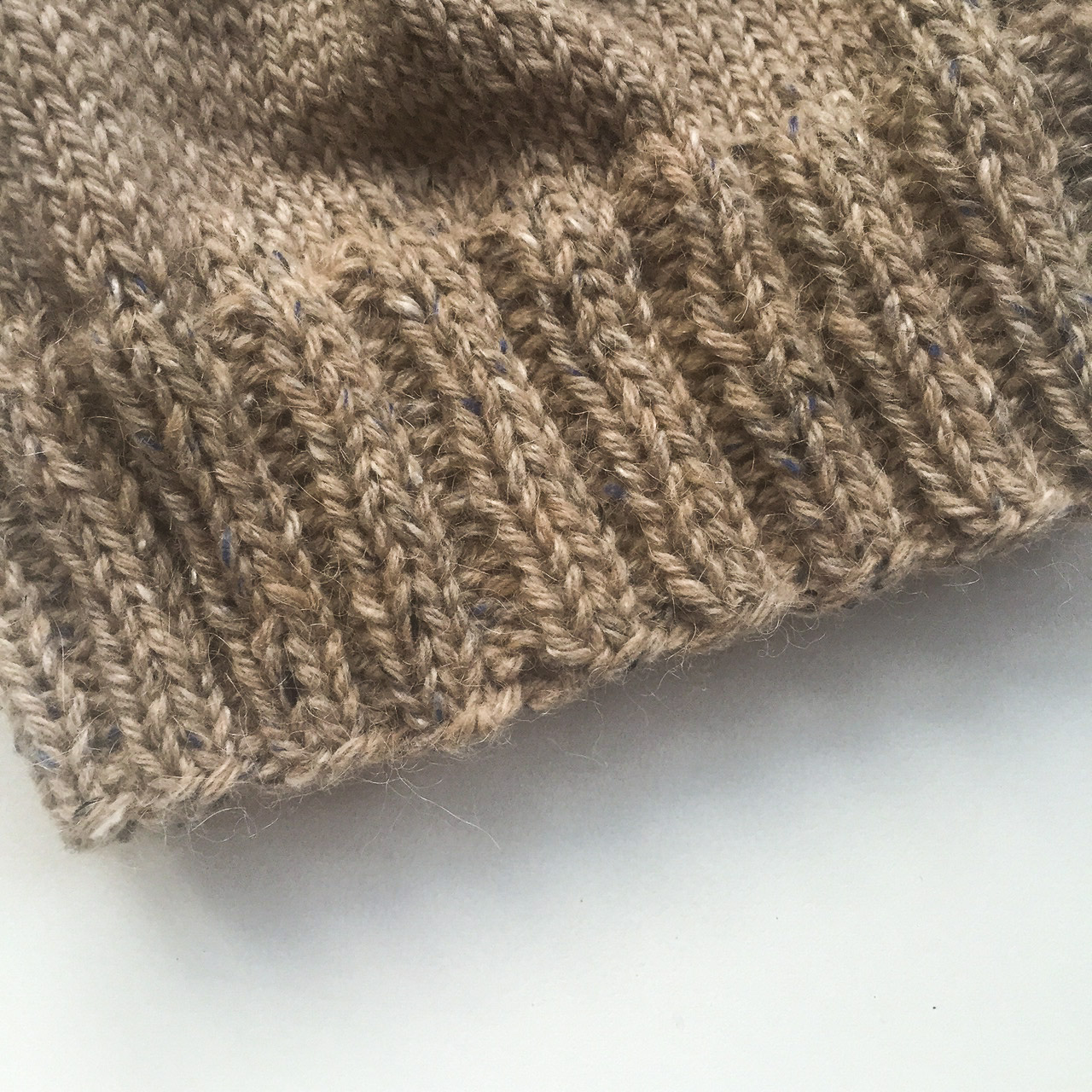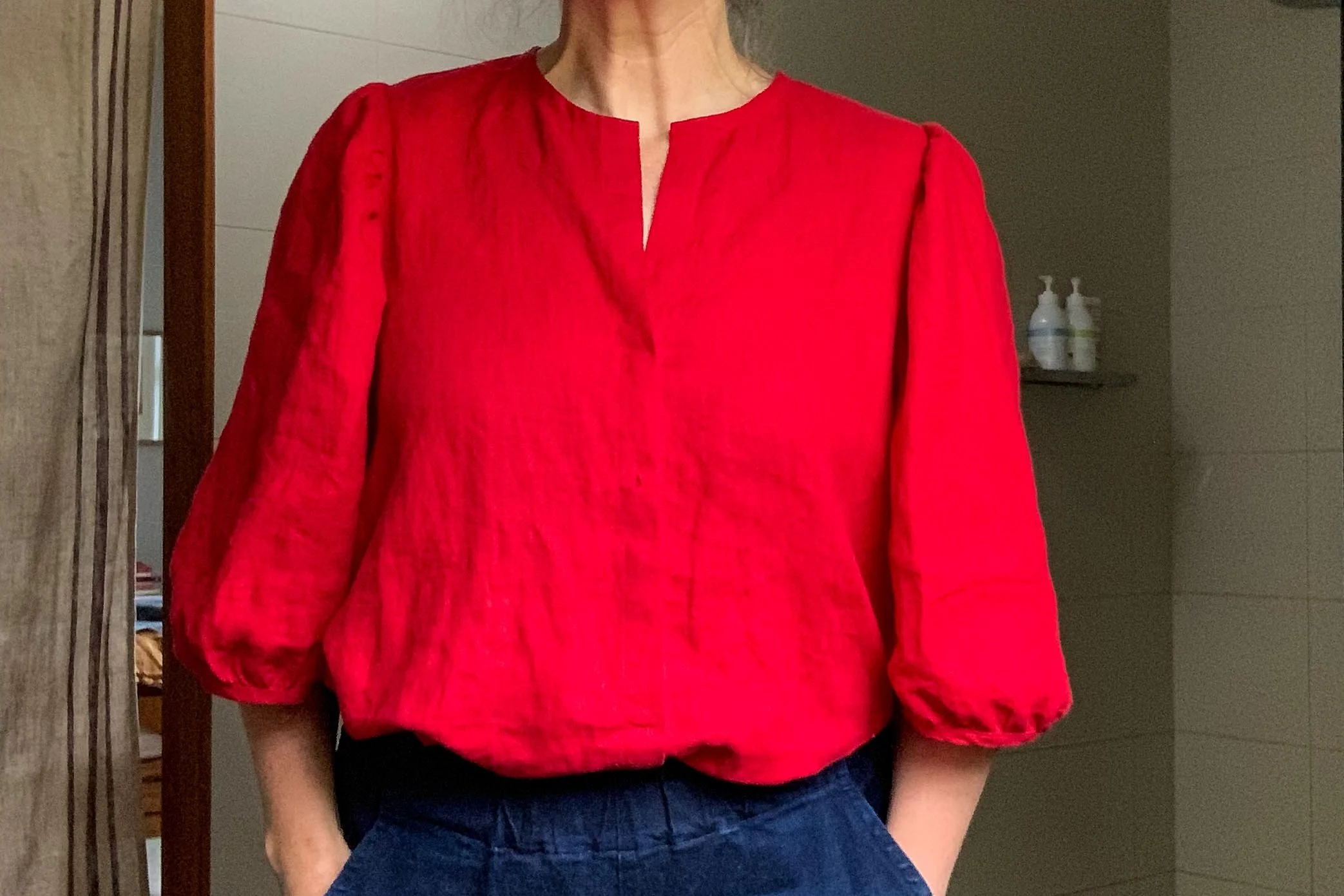A simple trick today but one that hopefully will make you very happy. I've used it a lot in the last few weeks, as posting about my Simple Hat Pattern has suddenly lead to my current slightly manic "hat knitting period". And so I thought I would share the joy of a jag-less* join in the round.
*jag-less / jog-less / step-less are used interchangably.
So what does the jog/jag/step look like and how do you get it.
For years, I used to start knitting in the round by casting on, making sure that I hadn't twisted the stitches, and then I would knit the first stitch on the left hand needle. Straight forward enough. And of course, I got the jaggedy step at the point in which I started knitting.
The big jag/step at the start of the round that I used to get.
A second picture of the same jag so you can see it up close.
Then I discovered this super simple smoothness trick.**
How to do a smooth jag-less join for knitting in the round.
Step 1: Cast on your stitches as your pattern suggests, but cast on one extra stitch.
Step 2: Join to knit in the round by putting your stitches next to one another as you normally would. But instead of knitting the first stitch on the left hand needle, move the first stitch to the right hand needle without knitting it. In other words slip the first stitch purlwise.
Cast on your stitches plus one extra stitch.
Slip the first stitch purlwise.
Step 2a: Ideally you would place a marker on the right hand needle after you slip the stitch. No marker is shown as I didn't use one - it would have made more sense for the post though - yes? :) A marker will help you when you are new at this.
Step 3: Start knitting by knitting the next stitch on the left hand needle which would have been the second stitch you cast on.
Slip the first stitch you cast on from the left needle to the right. Then knit (what was) the second stitch on the left hand needle.
After the stitch has been knit. The first stitch on the right hand needle is your first knit stitch and what we call the beginning of the round. The second stitch on the right hand needle is the slipped stitch.
Note that I was knitting ribbing for a hat in the photos and so you can see the knit 2, purl 2 in the photos below after I have knitted the full round.
Step 4: The next step is to knit (as the pattern is written) right around until you get to the second last stitch before your marker. This will include the last unknit stitch and the slipped stitch. You can see this below.
Step 5: The final step is to knit the two stitches left in the round together in pattern - the unknit stitch and the slipped stitch. That is you either do a k2tog or a p2tog. This gets rid of the extra stitch you cast on and creates a smooth join.
In my case in this picture I actually purl the two stitches together.
On the left hand needle you can see the last stitch that is unknit so far, then the stitch that you originally slipped from the left needle to the right. The third stitch from the needle tip is the first stitch I knitted in the round. It was a knit stitch - you can see that the 3&4th stitches on the needle, were knit stitches, and the 5&6th stitches were purl stitches which were the first four stitches of my rib.
I purl them together in pattern. It is by doing this step - knitting the last unknit stitch together with the slipped stitch that you close the gap, and dejag the start of the round.
This simple process will give you a start of round without the jog/jag/step and fill your knitter's heart with joy.
Enjoy and ask any questions if I've confused you!
Felicia x
**Where I discovered the trick has been lost to the sands of time sadly. But thank you whoever you are.












